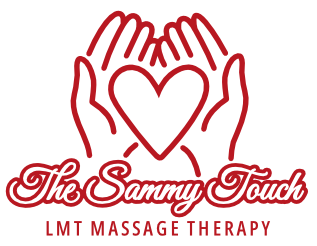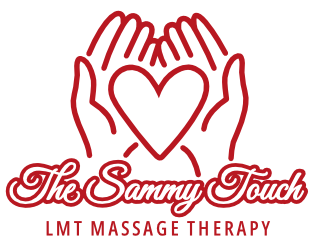How does massage work to alleviate pain and promote relaxation?
Massage works by creating a deep sense of embodied safety in the body. Moderate, pleasant compression triggers the nervous system’s “rest and digest” mode (parasympathetic activation), helping to regulate heart rate, calm breathing, and reduce stress hormones like cortisol. Additionally, thoughtful touch can distract from pain signals, while light stretch and pressure activate pain-relieving mechanisms in the skin. The key is that touch must feel good—grimacing through discomfort does not lead to long-term healing.
Will you "fix" my poor posture or alignment?
My approach is not focused on fixing an arbitrary “perfect” posture. Instead, it is focused on augmenting your body’s natural wellness and ability to move freely.
Pain and Discomfort: It’s Often About Holding, Not Posture
Discomfort often arises not because of your unique, natural posture, but because you’ve had to hold one position for too long (like sitting at a desk) or engage in repetitive movements without adequate breaks or variation. The human body is designed to move, and when we are forced to be still or do the same thing over and over, our tissues can become strained and irritated.
Did you know? World-class athletes, like Olympic sprinter Usain Bolt, run with a pronounced scoliotic posture. Even ballerinas, who embody what many consider “perfect posture,” frequently deal with a wide range of discomfort and biomechanical challenges. The human body is incredibly adaptable, and what is often labeled as “poor posture” can simply be your unique, efficient way of moving.
A Note on Posture Gimmicks
Unfortunately, some forms of alternative medicine—including some practitioners in fields like massage therapy and acupuncture—are taught to pathologize posture to create a sense of illness. This strategy is designed to create dependency, encouraging more bookings, tolerance of painful treatments, or the purchase of unnecessary products.
I am not into gimmicks or tricks. My hands-on work is not the final fix; it’s the first step.
The Real Remedy: Curiosity and Strength
My hands-on work is designed to reduce tension, relieve pain, and enhance your overall sense of wellness. This process also serves a crucial second purpose: it teaches you to get curious about your body, aches, and discomfort.
The ultimate protocol for long-term relief is not in my hands, but in your awareness and action. The real remedy is curiosity, which asks:
- What causes this? What makes it better?
- Can I give it a break? Can I use other muscles or the other side of my body?
This curiosity leads to Strength and Conditioning Protocols—the only lasting solution. Our goal is to build endurance and strength across the entire course of your muscle and tendons, creating balance between opposing muscle groups (like the front and back of your shoulder or hip). This helps your unique body feel and move better, which is what my approach to manual therapy is truly about.
You can read more about my philosophy on how manual therapies work here:
Why stretching IS NOT the answer to your "tight" or tense muscles.
Your muscles aren’t too short; they’re scared. Stop telling them to relax with passive stretching, and start telling them they’re safe with controlled, loaded strength
The common wisdom of aggressively stretching a “tight” muscle often provides only temporary relief because the sensation of tightness is usually a warning signal from your nervous system, not a sign of short, stiff tissue.
Modern sports science suggests that for most people and most forms of pain, static stretching is neither the most effective injury preventative nor the best way to achieve lasting flexibility.
Here is the “meat and potatoes” on why stretching often fails and what truly works:
Part 1: Why Your Muscles Feel “Tight” (The Core Problem)
The feeling of muscle tightness is often a neurological response called protective tension, a phenomenon where the body engages muscles to prevent instability or injury.
Part 2: What Actually Creates Lasting Flexibility
If stretching doesn’t physically lengthen tissue, where does the short-term relief come from, and what creates permanent change?
1. Neurological Adaptation (The Quick Fix)
When you hold a stretch, the immediate increase in your range of motion is mainly due to increased stretch tolerance.You are not lengthening the muscle; you are training your nervous system (specifically overriding the “stretch reflex”) to tolerate a deeper, more uncomfortable sensation before sending the signal to stop.
2. Structural Adaptation (The Long-Term Solution)
For structural, long-lasting changes in flexibility, you must introduce novel forms of strength training:
- Strength Training in the Elongated Position: This involves training a muscle (e.g., your hamstrings) while it is actively being stretched (e.g., a Romanian Deadlift or a Jefferson Curl). By adding load (weight) to the end-range of a movement, you signal to the body that this new length is not only safe but also functional. This is the mechanism thought to induce true, long-term change in the muscle’s resting length.
Part 3: The Danger of Stretching for the Hypermobile Athlete
The negative side effects of only stretching are most visible in populations with extreme flexibility, like ballerinas, where the issue is one of overuse and lack of control at the joint’s end-range:
- Joint Overload: Dancers operate at a supraphysiological range of motion (e.g., a high arabesque). Forcing the body into these extreme positions with repetitive movements stresses the non-muscular tissues like the hip labrum and joint capsule, leading to conditions like Femoroacetabular Impingement (FAI) and chronic pain.
- Muscular Imbalance: Female ballerinas often develop a unique strength profile (e.g., very strong external hip rotation) but suffer from functional weaknesses in key stabilizers (glutes, deep core). This imbalance forces the “tight” hip flexors to work as emergency stabilizers, creating that constant feeling of tension and discomfort.
The Takeaway: Train for Control, Not Just Range
The answer to muscle tension isn’t more passive stretching; it’s integrating strength and stability into your newfound range of motion.
To relieve persistent tightness, focus on:
- Dynamic Warm-ups: Use movement (leg swings, torso rotations) before exercise.
- Stability/Core Work: Strengthen the deep core and glutes to relieve the compensations placed on your “tight” muscles.
- Loaded Mobility: Incorporate exercises that challenge a muscle with weight at its longest position to signal to the nervous system that the new range is safe and strong.
What makes a Relaxation Massage with you unique?
Relaxation sessions are about creating a serene, deeply restorative experience. We’ll chat beforehand, but once you’re on the table, I follow your lead—whether that means quiet presence or gentle conversation. I won’t initiate small talk; this is your time. Aromatherapy, soothing music, and attentive, nurturing touch will help guide your body into a state of calm and safety.
Can massage heal injuries? What about deep tissue?
Massage can’t “fix” injuries, but it can support the body’s natural healing process by reducing tension, improving circulation, and helping you understand movement patterns that may be contributing to pain. As for “deep tissue,” here’s my controversial take: it’s more of a marketing term than a distinct modality. What’s deep for one person might feel overwhelming to another. I apply firm pressure when it serves you, but I won’t steamroll you. If you’re seeking that, I’ll happily refer you to a therapist better suited to that style.
What is your policy regarding clothing removal?
Your comfort and sense of security are my top priority, always.
- You may undress to your comfort level. This can mean remaining fully clothed, leaving your undergarments on, or undressing completely.
- The drape is always safe and secure. You will be fully covered by the sheet and blanket at all times, with only the area being actively worked on uncovered. I am trained in proper draping techniques to ensure your complete privacy and safety.
- I greatly appreciate you communicating any discomfort you feel at any point—whether it is with the draping, the temperature, the technique, or anything else. I am here to serve you, and open communication is key to a truly therapeutic session
Do you accept tips?
No, I do not accept tips.
- My pricing is transparent and set to reflect my education, training, and the complete cost of the session. My price includes everything, and no additional gratuity is expected or accepted.
- Pay It Forward Initiative: I believe everyone deserves access to therapeutic care. If you wish to donate, I will have a “Pay It Forward” jar available at my studio. Every month, I will collect these donations, match the total amount, and use the funds to offer complimentary or significantly discounted sessions to people who otherwise could not afford a massage.

